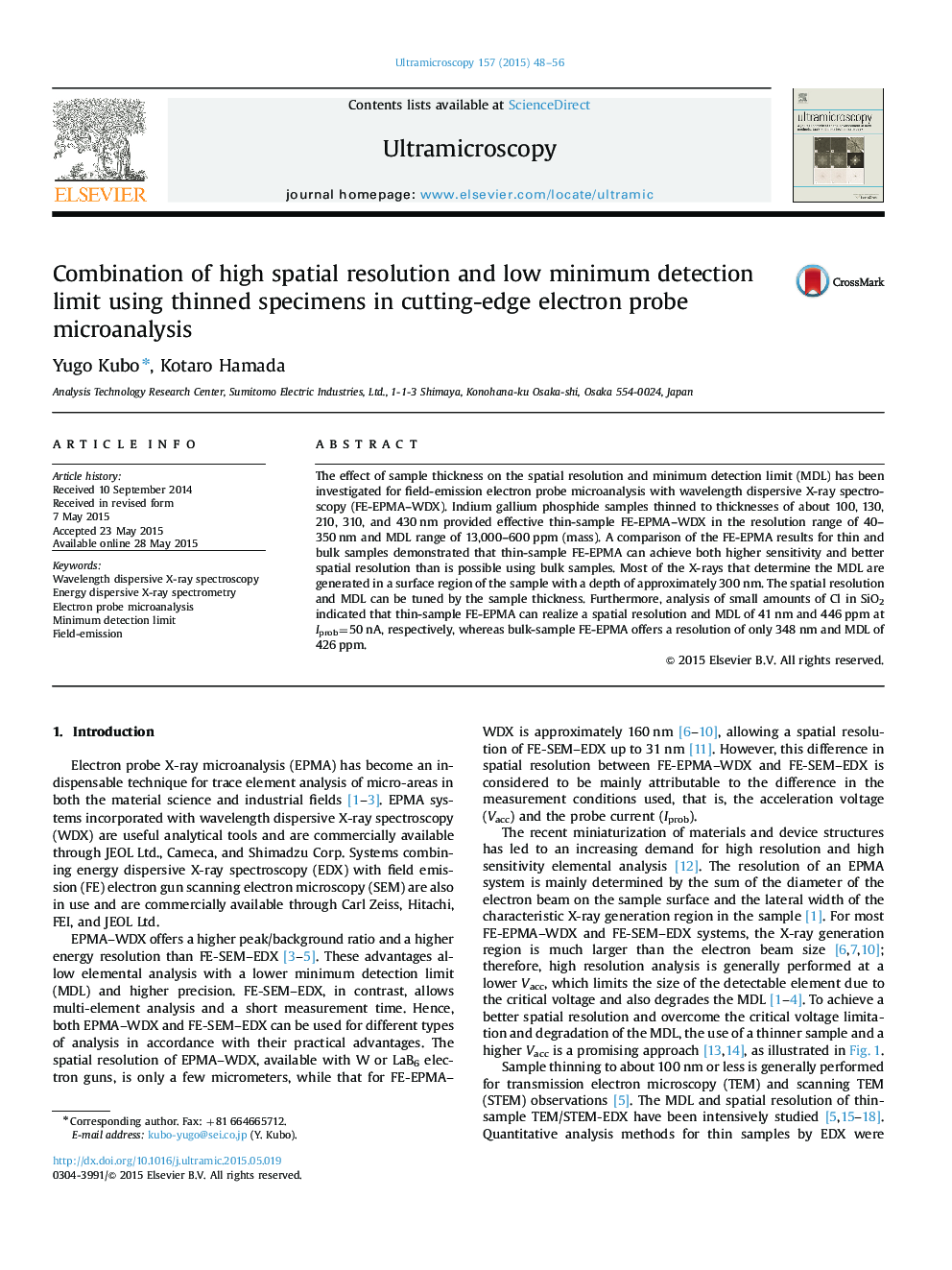| Article ID | Journal | Published Year | Pages | File Type |
|---|---|---|---|---|
| 8038076 | Ultramicroscopy | 2015 | 9 Pages |
Abstract
The effect of sample thickness on the spatial resolution and minimum detection limit (MDL) has been investigated for field-emission electron probe microanalysis with wavelength dispersive X-ray spectroscopy (FE-EPMA-WDX). Indium gallium phosphide samples thinned to thicknesses of about 100, 130, 210, 310, and 430Â nm provided effective thin-sample FE-EPMA-WDX in the resolution range of 40-350Â nm and MDL range of 13,000-600Â ppm (mass). A comparison of the FE-EPMA results for thin and bulk samples demonstrated that thin-sample FE-EPMA can achieve both higher sensitivity and better spatial resolution than is possible using bulk samples. Most of the X-rays that determine the MDL are generated in a surface region of the sample with a depth of approximately 300Â nm. The spatial resolution and MDL can be tuned by the sample thickness. Furthermore, analysis of small amounts of Cl in SiO2 indicated that thin-sample FE-EPMA can realize a spatial resolution and MDL of 41Â nm and 446Â ppm at Iprob=50Â nA, respectively, whereas bulk-sample FE-EPMA offers a resolution of only 348Â nm and MDL of 426Â ppm.
Keywords
Related Topics
Physical Sciences and Engineering
Materials Science
Nanotechnology
Authors
Yugo Kubo, Kotaro Hamada,
